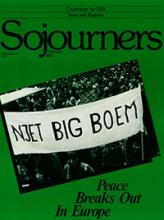In October of 1978, Congress voted to extend the seven-year time limit it had imposed for ratification of the Equal Rights Amendment (ERA) by another three years and three months, to June 30,1982. Seven months later, legislators from Idaho and Arizona filed suit in federal court challenging the constitutionality of the extension. They also sought validity for a state's power to rescind a previous ratification.
The case was assigned to Judge Marion Callister of Idaho, who held a high position in the hierarchy of the Mormon Church. Because the church has been a primary opponent of the ERA, the U.S. Department of Justice and the National Organization for Women (NOW) filed motions to get Callister to disqualify himself from the case on the grounds of bias. Callister refused, stating that any decision he might make would be subject to full appellate review and the possibility of reversal. He resigned six months later as a regional representative of the Mormon Church.
The case might have been simply a footnote in feminist history, but just before Christmas Callister announced his decision on the case and placed a cloud of confusion around the ERA debate, just as it enters its final stretch
Callister ruled that Congress violated the Constitution when it extended the deadline for ratification, stating that Congress may set whatever deadline it chooses, but has no power to change it. In effect, his decision could mean that the ERA died on March 22, 1979, the original deadline. Callister also ruled that states could rescind a previous ratification. Congress apparently is bound to its decisions; states are not.
Read the Full Article

